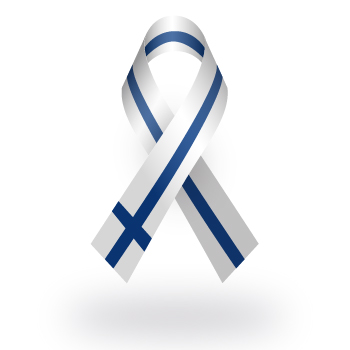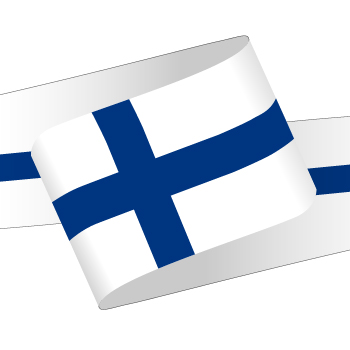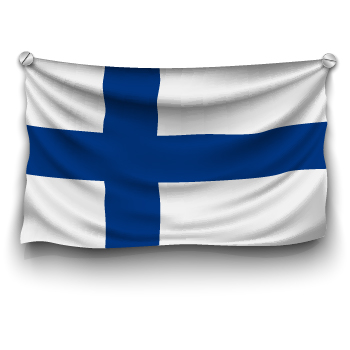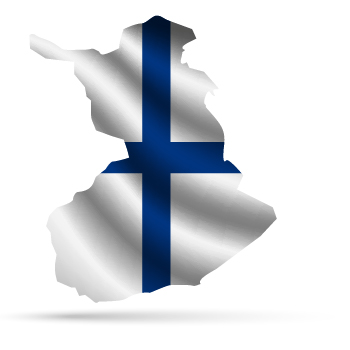A brief history of the Finnish flag
The Finnish flag has a rich history dates back to the 19th century. It is known as the national flag of Finland and is a rectangular state flag with a blue cross on a white background. The flag’s design is believed to have been inspired by the Russian flag, as Finland was a Grand Duchy under Russian rule during that time.
However, the Finnish flag has evolved over the years. In the early 20th century, Finland used a coat of arms on its flag, which was later replaced by the current design. The blue cross represents the thousands of lakes that dot the Finnish landscape, while the white background symbolizes the snow covering the country during winter.
The Finnish flag has been associated with many important historical events and figures. It was often displayed during national tragedies like the Finnish Civil War and World War II. Notable Finnish artists and intellectuals, like Eino Leino and Jean Sibelius, have also celebrated the flag in their works.
Today, the Finnish flag is an important symbol of Finnish identity and is flown proudly at many famous landmarks, including the Nyländska Jaktklubben sailing club and the home of Bruno Tuukkanen, the designer of the current flag. Finnish Flag Day, celebrated on June 24th, is a special day where customs and traditions are observed to honour the flag and everything it represents.


Design elements of the Finnish flag
The design of the Finnish flag is simple yet striking. The rectangular state flag features a blue cross on a white background. The blue cross is centred on the flag and reaches to the edges. This unique design sets the Finnish flag apart from other Scandinavian flags, which typically have their crosses in the left corner of the flag.
The blue cross represents the thousands of lakes that cover the Finnish landscape, making Finland known as the “Land of a Thousand Lakes.” The lakes play a significant role in Finnish culture and daily life, so they should be symbolized on the flag.
The white background represents the snowy winters that Finland experiences. The country is often blanketed in beautiful white snow, creating a magical winter wonderland. This aspect of the flag’s design reflects Finland’s unique climate and winter’s important role in Finnish culture and traditions.
The simplicity of the Finnish flag’s design allows for easy recognition and visibility. Whether flown at government agencies or proudly displayed at famous landmarks like the Nyländska Jaktklubben sailing club, the Finnish flag stands out with its striking blue and white combination. It symbolises Finnish identity and pride, representing the country’s natural beauty and rich cultural heritage.
The symbolism behind the Finnish flag colours
The colors of the Finnish flag, blue and white, hold deep symbolism and meaning for the people of Finland. The blue cross on the white background represents not only the natural beauty of the country but also its rich history and cultural heritage.
The blue cross symbolizes the thousands of lakes covering the Finnish landscape, earning Finland the nickname “Land of a Thousand Lakes.” These lakes hold great importance in Finnish culture, serving as a source of livelihood and recreation for the people. The blue cross serves as a reminder of this connection to nature and the tranquil beauty of the Finnish countryside.
On the other hand, the white background represents the snowy winters that Finland experiences. Snow has become integral to Finnish life with its long, harsh winters. The white background symbolizes winter’s purity and serenity, creating a sense of peace and calm amid the cold.
The combination of blue and white also holds significance in Finnish history. Blue and white have long been associated with the Finnish nation, representing its struggle for independence and perseverance through difficult times. The colors symbolize Finnish identity and pride, inspiring patriotism and unity.


Interesting facts about the Finnish flag
Did you know that the Finnish flag has two different versions? Apart from the national flag, Finland also has a civil one used by civilians and non-military government agencies. The civil flag features a blue Nordic cross on a white background, similar to the national flag, but without the coat of arms. This distinction sets Finland apart from many countries with only one flag.
Another interesting fact is that the flag is considered a special flag. This means it can be flown 24/7, unlike most flags raised only during daylight hours. This special status is a testament to the significance and importance of the flag in Finnish culture and identity.
Regarding famous landmarks, the Nyländska Jaktklubben sailing club holds a special place. It is one of Finland’s most prestigious sailing clubs and has proudly flown the Finnish flag for over a century. The club is known for its rich sailing history and commitment to promoting the Finnish maritime heritage.
Lastly, Finland is often called a Scandinavian country, but did you know its design sets it apart from other Scandinavian flags? While most Scandinavian flags have their crosses in the left corner of the flag, the flag has a centered cross that extends to the edges. This unique design element adds to the distinctiveness and recognition of the Finnish flag.
Famous landmarks and events associated with the Finnish flag
Finland has several famous landmarks and events closely associated with the flag. One such landmark is the Nyländska Jaktklubben Sailing Club. This prestigious club has a long history is dedicated to promoting Finnish maritime heritage. For over a century, the Nyländska Jaktklubben has proudly flown the Finnish flag, symbolizing their deep connection to the country’s rich sailing traditions.
Another notable event associated with that flag is the White Flag tradition. During national mourning or tragedy, it is customary for the Finnish flag to be flown at half-mast, with a white flag placed above it. This powerful symbol signifies solidarity and respect for those who have suffered.
These famous landmarks and events serve as reminders of the flag’s importance in the country’s history and culture. They represent the pride and unity of the Finnish people, as well as their resilience in the face of adversity. So the next time you see the flag flying proudly, remember its significance for Finland and its people.
Read more about the facts about the flag of Iceland.
Celebrating Finnish Flag Day: Customs and Traditions
Finnish Flag Day, celebrated on June 24th, is a special day for the Finnish people to honour their beloved flag and everything it represents. Customs and traditions are observed throughout the country, creating a sense of unity and patriotism among the people.
One popular tradition on that Day is flag hoisting in various locations. Many government buildings, schools, and private residences proudly display the flag on this special day. It’s a beautiful sight to see the blue cross against the white background fluttering in the wind, symbolizing the nation’s strength and resilience.
Another tradition is the participation in community events and parades. People celebrate Finnish culture, wearing traditional costumes and singing patriotic songs. One famous landmark, the Nyländska Jaktklubben sailing club, plays a significant role in these festivities. This prestigious club has a long-standing history is known for its commitment to promoting Finnish maritime heritage. It’s a fitting location to gather and pay tribute to the flag and the country it represents.
Food is essential to any celebration, and that Day is no exception. Traditional Finnish dishes, such as karjalanpiirakka (Karelian pastries) and sima (homemade lemonade), are enjoyed by families and friends. These culinary delights bring people together, creating a sense of camaraderie and joy.
Throughout the day, people reflect on its role in shaping the nation’s history. They remember the sacrifices made by their ancestors and the struggles they faced to gain independence. Finnish Flag Day serves as a reminder of the flag’s values and principles – freedom, unity, and resilience.
Whether you’re a native Finn or a visitor to the country, participating in that Day customs and traditions is a meaningful experience. It allows you to connect with the Finnish culture and appreciate the deep-rooted pride that the Finnish people have for their flag. So, on June 24th, join in the celebrations and wave the Finnish flag high with honour and respect.
Get more information about the facts about the flag of Denmark.
FAQs
The blue cross on the Finnish flag represents the country’s many lakes and close ties to nature. It also reflects the blue skies often visible during the summer months in Finland.
The Finnish flag represents Finland’s struggle for independence from Russia in 1917. It symbolises national pride, unity, and resilience among the Finnish people.
Yes, there are guidelines for displaying the Finnish flag. It should be raised in the morning and lowered at sunset. When flown with other flags, the Finnish flag should be given a position of honour.
Yes, “Finnish Flag Day” is celebrated on June 24th each year. It’s a significant national holiday honouring the flag’s symbolism and the Finnish culture.








